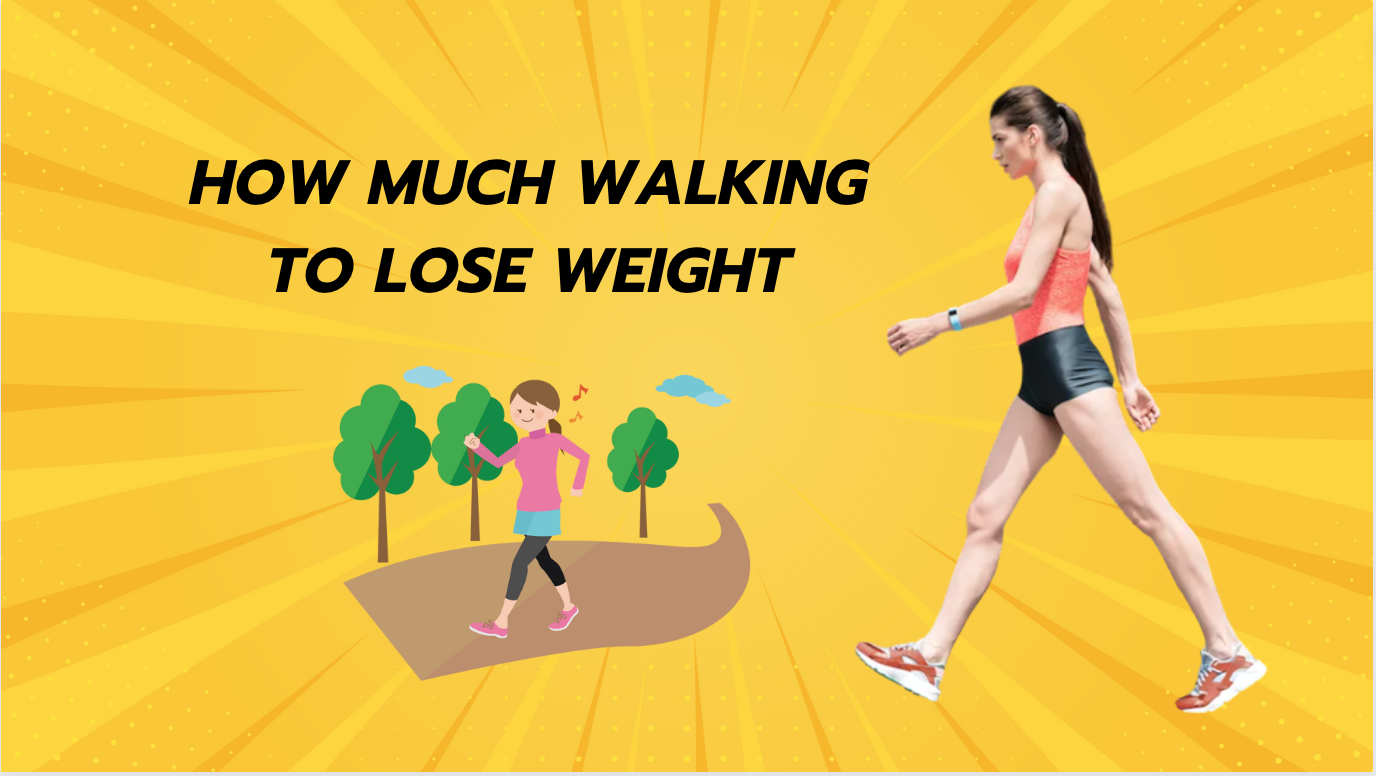Unveiling the Secret: How Much Walking to Lose Weight
Walking is one of the most accessible and natural forms of exercise that offers a myriad of health benefits. But a question that often arises is: How much should one walk to shed those extra pounds? The relationship between walking and weight loss is intertwined with factors like intensity, duration, diet, and individual metabolic rates.
This guide will delve into the science behind how much walking to lose weight, helping you understand how to tailor your walking routine to meet your weight loss goals. Whether you’re a beginner or someone looking to optimize their daily steps, we’ve got you covered. Join us on this journey to discover the steps towards a leaner you!
How Many Steps per Day to Lose Weight?

The number of steps required to lose weight largely depends on various factors, including one’s current weight, diet, metabolism, and more. However, the universally recognized benchmark for general health is 10,000 steps a day. Let’s break down how steps correlate to weight loss.
Understanding Calories Burned:
On average, walking 10,000 steps burns between 400 to 500 calories for most people, depending on their weight and walking speed. Remember, there are 3,500 calories in a pound of body fat. So, to lose one pound, you’d need to have a deficit of 3,500 calories, either through exercise, diet, or both.
Basal Metabolic Rate (BMR):
Everyone burns calories at rest, which is termed the Basal Metabolic Rate (BMR). This number varies based on factors like age, weight, gender, and muscle mass. When you add daily activities and exercises, like walking, to this number, you get the total calories burned in a day.
Setting Goals:
If you aim to lose one pound a week solely through walking, you’d need to walk enough to create a daily calorie deficit of 500 calories (500 calories x 7 days = 3,500 calories). Depending on your BMR and diet, this might be more or less than 10,000 steps.
Intensity Matters:
Not all steps are created equal. If you’re walking briskly or uphill, you’re going to burn more calories than if you’re strolling slowly. Using tools or apps that measure intensity can give a more accurate estimate of calories burned.
Complement with Diet:
For optimal weight loss results, it’s crucial to pair walking with a balanced diet. Consuming nutrient-rich foods and maintaining a calorie deficit will expedite weight loss.
The Impact of Walking Speed on Weight Loss
One of the most popular exercises for weight loss is walking, and it’s not hard to see why. Not only is walking low-impact and accessible to people of all fitness levels, but it can also be a great way to burn calories and shed unwanted pounds. However, what many people don’t realize is that the speed at which you walk can have a significant impact on your weight loss journey.
Walking at a brisk pace increases your heart rate and engages more muscles than simply strolling leisurely. This increased intensity means that your body has to work harder and burn more calories during your walk. Studies have shown that walking at a faster pace for shorter periods of time may be more effective for weight loss than longer, slower walks. So if you want to maximize the calorie-burning potential of your walks, consider picking up the pace.
Another interesting aspect of walking speed and weight loss is the effect it has on our metabolism. Walking at a higher intensity stimulates our metabolism even after we’ve finished exercising, resulting in an extended period of calorie burning for several hours post-walk. On the other hand, slower walks may still benefit cardiovascular health but do little to elevate our metabolic rate substantially enough to promote significant weight loss.
Incorporating Interval Training into Your Walks
Interval training is a great way to spice up your walks and maximize the calorie burn. By incorporating short bursts of high-intensity exercises into your walking routine, you can effectively turn a leisurely stroll into a full-body workout. Not only does interval training elevate your heart rate, but it also engages different muscle groups, making your walks more challenging and rewarding.
One effective way to incorporate interval training into your walks is by alternating between periods of brisk walking and power walking. Start with a warm-up by walking at a comfortable pace for about 5 minutes. Then, pick up the speed and walk as fast as you can for 30 seconds or one minute. Afterward, return to brisk walking for another 2-3 minutes before repeating the cycle. This method not only boosts your cardiovascular endurance but also increases the overall intensity of your workout.
To make interval training even more engaging and effective during walks, consider adding lunges or squats during the recovery periods. For example, after power walking for 30 seconds, stop and perform 10-15 lunges on each leg before returning to brisk walking. These additional exercises help strengthen your lower body muscles while keeping your heart rate elevated throughout the entire workout. With these tips in mind, incorporating interval training into your regular walks is an excellent way to take them to new heights. Try experimenting with different intervals and exercises that suit your fitness level and goals best.
Final Thoughts
In conclusion, walking can be an effective and accessible way to lose weight. By incorporating regular walks into your routine and increasing your daily step count, you can burn calories, improve cardiovascular health, and boost your overall fitness levels. Remember to start slowly and gradually increase the duration and intensity of your walks to prevent injury and allow for proper recovery. Additionally, consider pairing your walking routine with a balanced diet to maximize weight loss results. So, lace up those sneakers and start walking towards a healthier you today!
FAQs
How many steps should I take daily to see results?
To get noticeable results, aim for about 10,000 steps per day. However, any increase in activity level is beneficial for weight loss.
Should I incorporate other exercises along with walking for better results?
Adding strength training exercises or cross-training activities like swimming or cycling alongside walking can enhance muscle tone and boost metabolism, leading to more effective weight loss.
Can I target specific areas of my body for fat loss by walking?
While you cannot spot-reduce fat from specific areas by walking alone, consistent exercise will help reduce overall body fat percentage over time.







